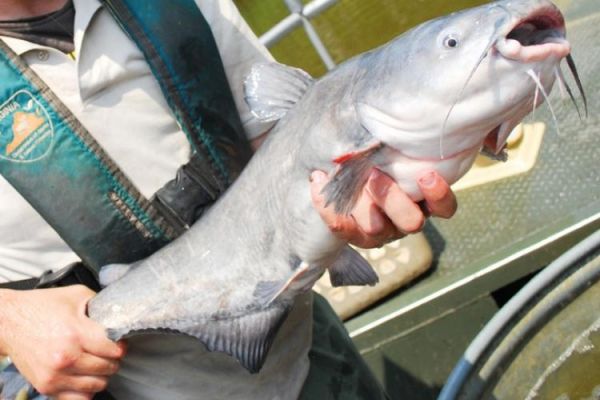
Ranging from olive to sleet, this catfish has even been observed to have hints of gray or blue. The ever-popular channel catfish comes in various colors and has an aggressively forked tail and jutting upper jaw.

To tell them apart, note that the blues have four barbels (the “whiskers”) while channels have more barbels and usually have spots on their bodies. Artificial bait can work, but using natural bait already found in the lakes and rivers where you fish tends to have a higher success rate.Īnglers can often confuse blue and channel catfish.

The biggest blue cats have topped 100 pounds, making them the largest catfish species in America.įavorite among anglers, these large and aggressive catfish will take a bite out of just about anything.īlue catfish primarily rely on their sense of smell when searching for food, and they prefer live or freshly killed bait with a pungent odor. With a lifespan between 20 to 30 years, the average blue catfish weighs between 20 to 40 pounds. Juvenile blue catfish will feast upon invertebrates and small fish, while an adult blue catfish’s diet primarily consists of crawfish, mussels, and other fish.īoth a scavenger and a predator, these catfish will not shy away from taking a bite out of recently deceased fish or even small mammals.īlue catfish reach sexual maturity at about 24 inches long. With a preference for clean water, they’re often located over rocky, sandy, or gravel bottoms but also can be found in siltier conditions. However, these big catfish also do well in larger lakes and reservoirs. In the Mississippi River system, where they are native, blue catfish prefer deep tributaries and channels, seeking out the warm water in the winter and cooler water in the summer. This fork-tailed catfish earned its moniker from its slate blue back. Ranging from sizes of several ounces to well over 100 pounds, Louisiana catfish are spread throughout lakes, streams, ponds, rivers, bayous, marshes, and coastal flats.Įach species has distinct features, feeding habits, and environment preferences, making it easy for anglers who know where to look to tell the difference.

There are three major species of catfish that are of high interest to anglers in Louisiana.


 0 kommentar(er)
0 kommentar(er)
